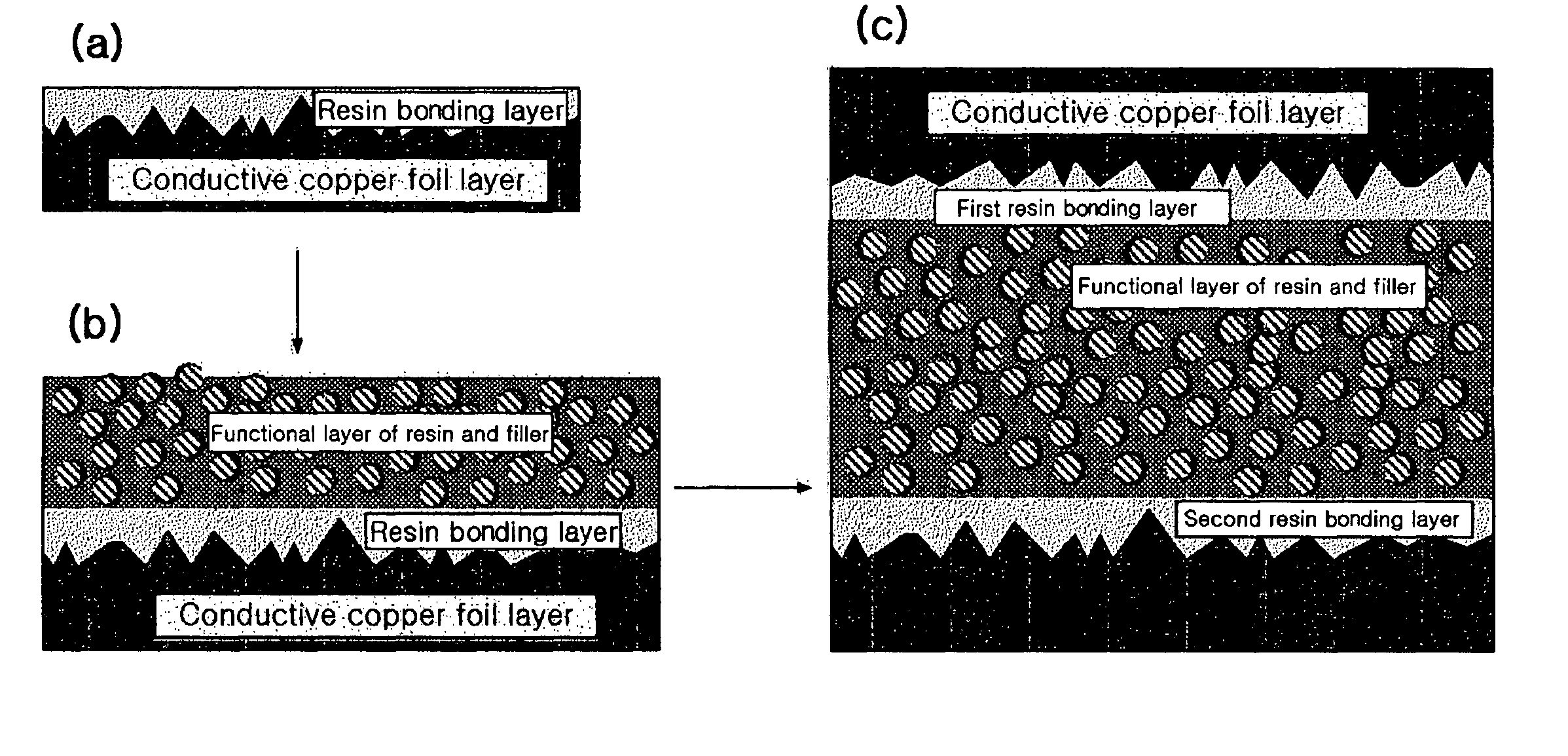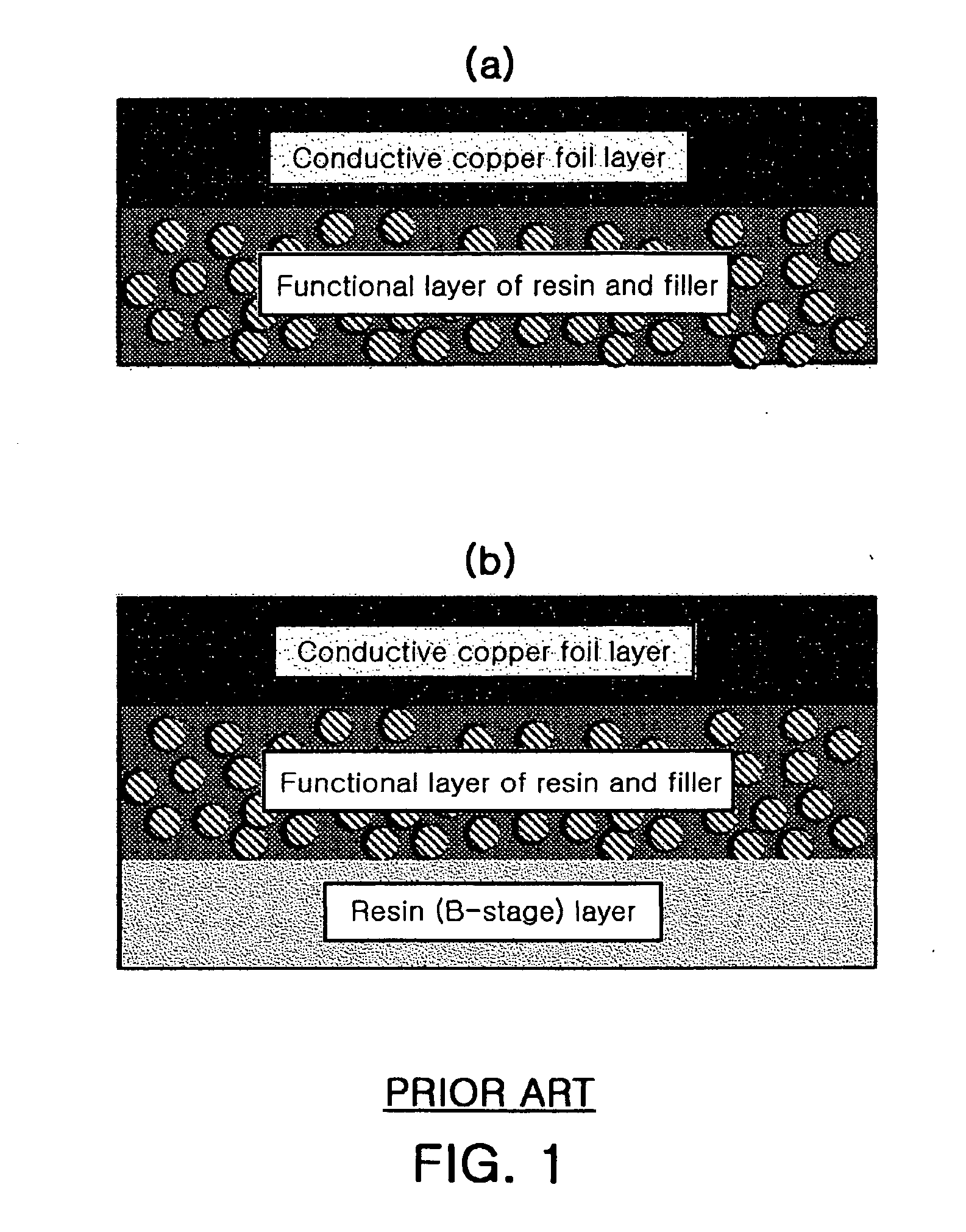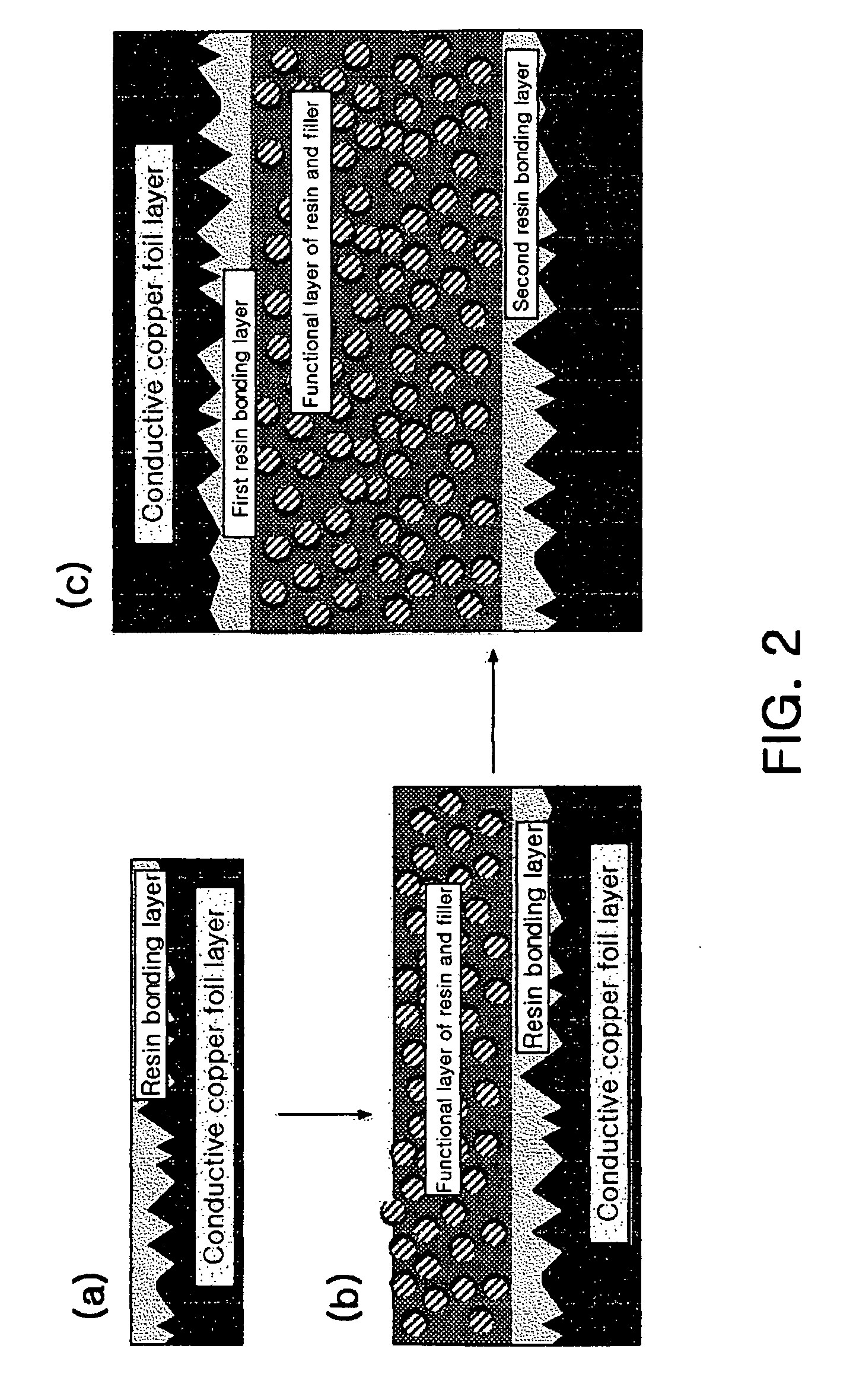Printed circuit board material for embedded passive devices
a passive device and printed circuit board technology, applied in the direction of dielectric characteristics, high frequency circuit adaptations, dielectric substrate metal adhesion improvement, etc., can solve the problems of peel strength reduction, adhesion reduction, and adhesion reduction, and achieve excellent electromagnetic properties and reliability
- Summary
- Abstract
- Description
- Claims
- Application Information
AI Technical Summary
Benefits of technology
Problems solved by technology
Method used
Image
Examples
##ventive example 1
INVENTIVE EXAMPLE 1
[0070] This inventive example shows that printed circuit board material samples produced according to the inventive method maintain excellent peel strength regardless of a change in the content of fillers in a functional layer. The printed circuit board material samples used for the measurement of peel strength were produced in the following manner.
[0071] On one surface of an STD copper foil with a roughness of 5 μm and a width of 450 mm, a resin bonding layer made of bisphenol A epoxy resin was coated in a thickness of 10 μm by a comma coating method. The coated resin bonding layer was subjected to B-stage semi-curing at 150-170° C. for 1-5 minutes. Then, on the semi-cured resin bonding layer, a dielectric layer was coated in a thickness of 20 μm by a comma coating method, and subjected to B-stage semi-curing at 150-170° C. for 1-5 minutes, thus producing an RCC foil. Then, two pieces of the RCC foils produced as described above were laminated to each other in s...
##ventive example 2
INVENTIVE EXAMPLE 2
[0076] This Inventive Example shows that printed circuit board material samples produced according to the inventive method maintain excellent peel strength regardless of a change in the content of fillers in a functional layer.
[0077] The samples used in Inventive Example 2 were produced in the same manner as in Inventive Example 1 except that a VLP copper foil with a roughness (Rz) of 3 μm was used as a copper foil, and a mixture of bisphenol A epoxy resin, bisphenol A novolac epoxy resin and brominated epoxy resin which had been mixed in a weight ratio of 1:3:1 was used as the resin in the resin bonding layer and dielectric layer. The produced samples were measured for peel strength, and the measurement results are shown in Table 2 and FIG. 5.
[0078] As evident from Table 2 and FIG. 5, the inventive samples showed excellent peel strength regardless of an increase in the content of the filler barium titanate in the dielectric layer.
TABLE 2Comparison of peel str...
PUM
| Property | Measurement | Unit |
|---|---|---|
| roughness | aaaaa | aaaaa |
| thickness | aaaaa | aaaaa |
| vol % | aaaaa | aaaaa |
Abstract
Description
Claims
Application Information
 Login to View More
Login to View More - R&D
- Intellectual Property
- Life Sciences
- Materials
- Tech Scout
- Unparalleled Data Quality
- Higher Quality Content
- 60% Fewer Hallucinations
Browse by: Latest US Patents, China's latest patents, Technical Efficacy Thesaurus, Application Domain, Technology Topic, Popular Technical Reports.
© 2025 PatSnap. All rights reserved.Legal|Privacy policy|Modern Slavery Act Transparency Statement|Sitemap|About US| Contact US: help@patsnap.com



